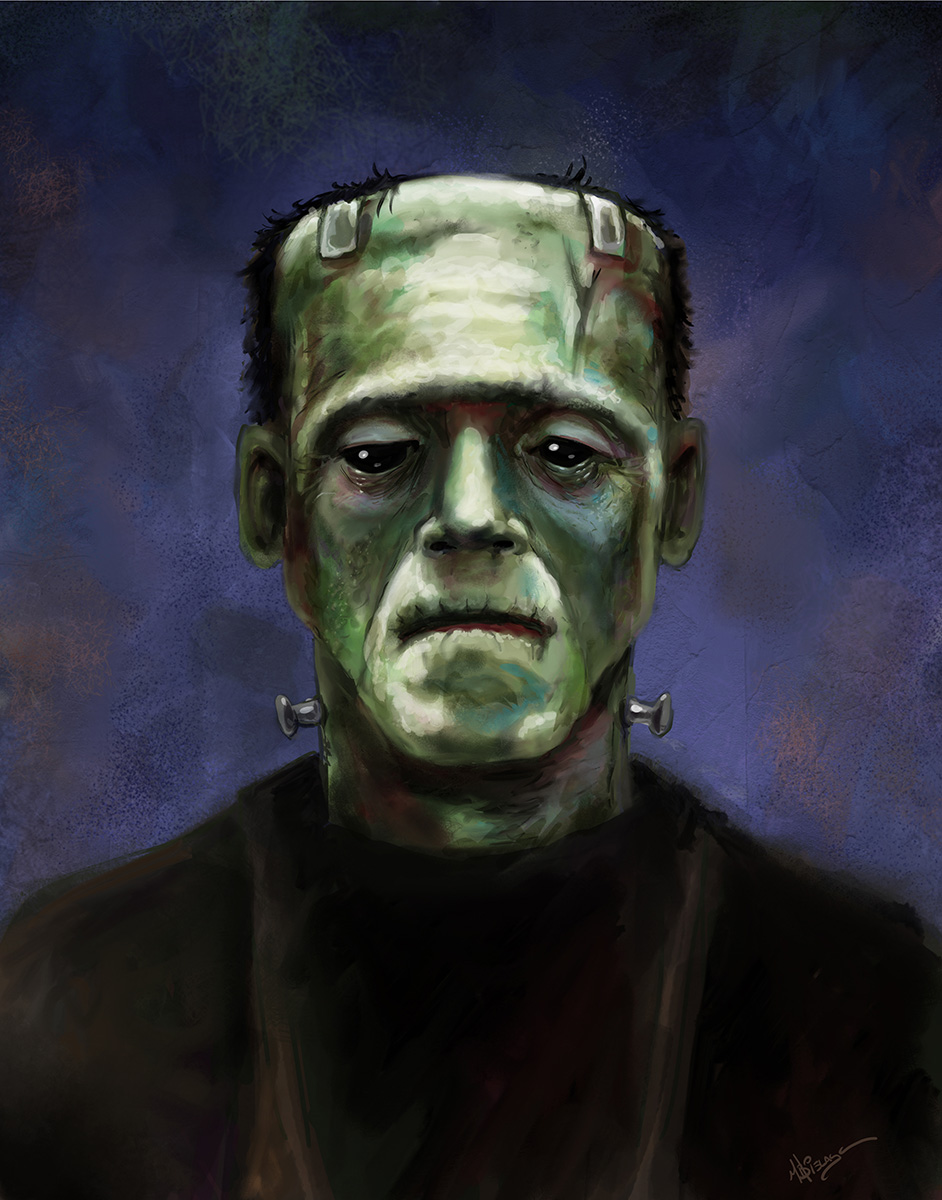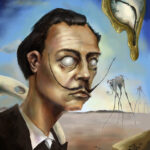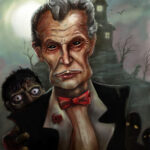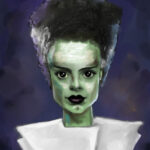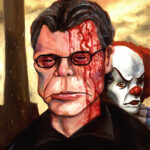Franeknstein’s Monster Art Print
Orders fulfilled by Aradani
From the Artist
Frankenstein’s Monster Art: This is another in my Horror Icon portrait series. I had to model it on the classic Karloff version. I have also completed a painting for the Bride of Frankenstein.
More About The Art
Frankenstein’s monster, often referred to as “Frankenstein,” is one of the most enduring and iconic figures in literature, film, and pop culture. The character first appeared in Mary Shelley’s 1818 novel Frankenstein; or, The Modern Prometheus, a gothic masterpiece that explores themes of creation, isolation, and the consequences of unchecked scientific ambition.
In Shelley’s novel, the monster is not a mindless brute, but a deeply complex being. Created by Victor Frankenstein through an ambitious experiment to bring life to the dead, the monster is composed of body parts from various corpses. Upon awakening, he is abandoned by his creator, leading to a life of loneliness and suffering. Though capable of great intelligence and sensitivity, the monster is repeatedly rejected by society because of his horrifying appearance. His frustration and despair drive him to seek revenge against Victor, resulting in a tragic cycle of violence and death.
Other Versions
Over the years, the monster has undergone significant transformations in popular culture, diverging from Shelley’s original vision. In James Whale’s 1931 film Frankenstein, the creature, portrayed by Boris Karloff, became the face of Universal Horror. Karloff’s portrayal of the monster, with his square-shaped head, bolts in his neck, and lumbering movements, became the definitive image of Frankenstein’s monster for generations. Unlike Shelley’s articulate and introspective creature, Karloff’s monster was mostly mute, emphasizing physicality and terror over intellectual depth. This version established the monster as a tragic figure, misunderstood and feared, but with a vulnerability that resonated with audiences.
In the decades that followed, Frankenstein’s monster became a cultural icon, appearing in numerous adaptations, parodies, and references. From The Bride of Frankenstein (1935) to Mel Brooks’ Young Frankenstein (1974), the character has been reinvented and reinterpreted across genres. The monster’s image has been used in everything from children’s cartoons to horror anthologies, reflecting its versatility and timeless appeal.
In modern pop culture, Frankenstein’s monster symbolizes a variety of themes, from the dangers of unchecked scientific experimentation to the struggle for acceptance and identity. The character has appeared in graphic novels, video games, and even as a symbol in discussions about artificial intelligence and bioethics. Whether as a symbol of humanity’s quest to transcend nature or as a misunderstood outcast, Frankenstein’s monster continues to captivate the imagination, evolving while staying rooted in Shelley’s original tale of tragedy and creation.
About Michael Bielaczyc
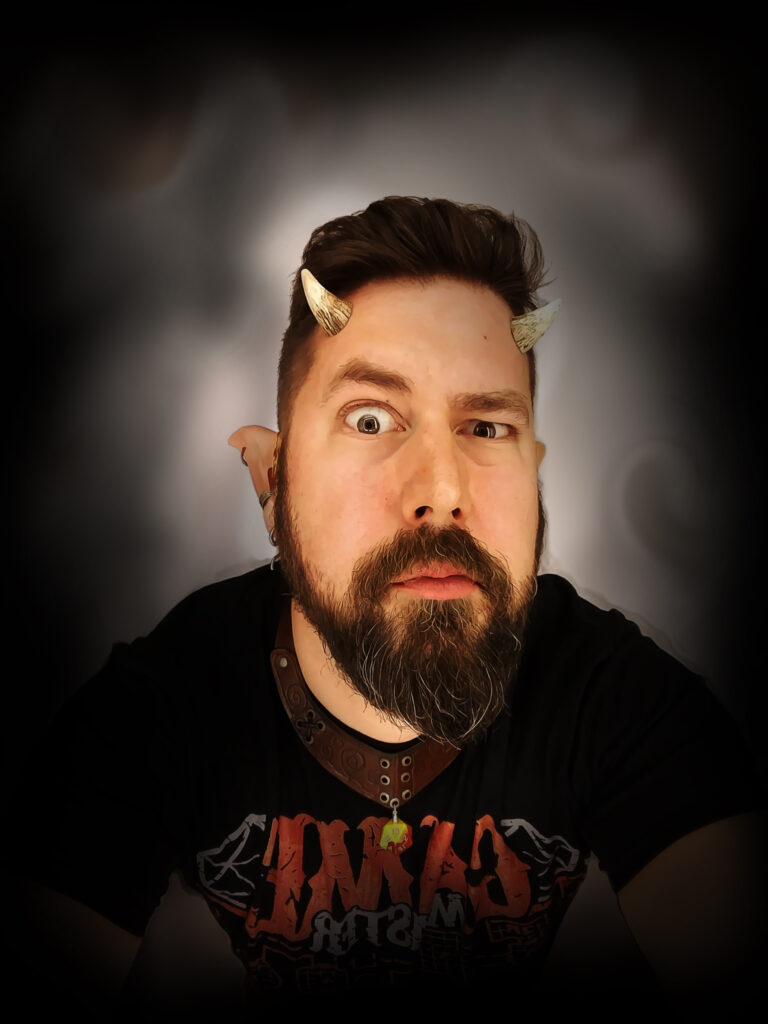
Michael Bielaczyc has been working professionally in the art field since 2001 when he founded Aradani Studios with his brother Paul. Together they have exhibited across America selling both their artwork and costuming. He works in many mediums from oil paint to latex prosthetics, video to graphite.
In 2012, Michael started Lone Wanderer Entertainment with his long time friend Dane Clark Collins to publish books based in their dark fantasy world – Atheles. Since then he has authored 4 books and created the SagaBorn RPG system.

